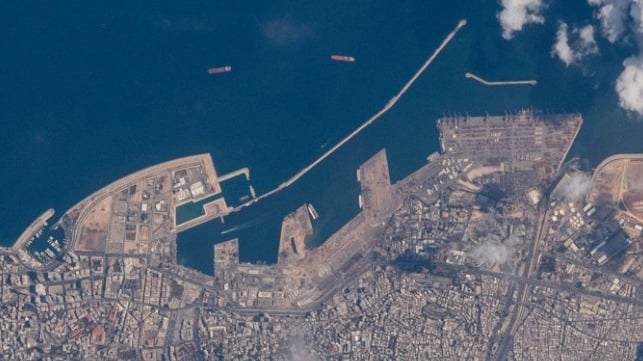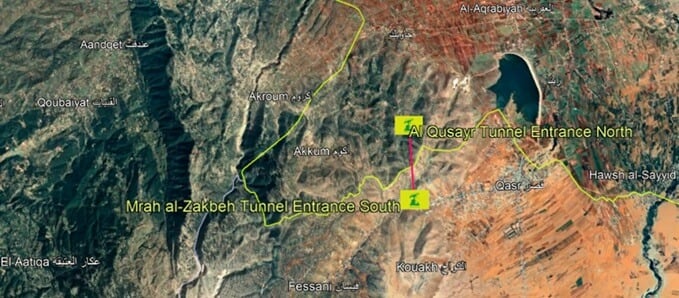Iran Probes for New Maritime Routes Into Lebanon

Reports from Israel suggest that the Islamic Revolutionary Guard Corps (IRGC) Quds Force is making progress in its search for new routes into Lebanon, following the destruction of the traditional smuggling routes into Lebanon by Israel in recent months. A primary smuggling route, through Beirut docks, had been shut down beforehand in the wake of the fire and subsequent explosion of badly stored ammonium nitrate in the dock’s quayside Warehouse 12 on August 4, 2020.
Unit 190, the IRGC Quds Force’s dedicated smuggling unit, has a well-established modus operandi of developing multiple routes to service a particular client, so that there is built-in redundancy to the supply system. The Iranians also appear to assume that a proportion of shipments will be intercepted - so they divide shipments into smaller consignments using different routes, so as to be able to absorb any losses.
In the days before Hezbollah was decimated by Israeli strikes, Unit 190 - working with Hezbollah’s Unit 4400 - operated three primary routes into Lebanon to keep Hezbollah supplied. Besides shipping into Beirut docks, Iranian heavy cargo aircraft from Mahan Air regularly flew into Beirut’s International Airport, where aircraft were unloaded by Hezbollah without any interference on the part of the Lebanese state. Large volumes were also trucked over the border from Syria, having arrived in Syria primarily overland, through the port of Latakia or via Damascus International Airport.
Some sophistication in the smuggling routes into Lebanon was needed, after Lebanese border security was tightened with the aid of RAG, a British private security company; on October 3, 2024, the Israelis destroyed a two mile long truck tunnel which straddled the border and emerged into northern Lebanon at Mrah al-Makbeh. One of many routes, this tunnel demonstrated the sophistication of the smuggling system, which is now dismantled.

The 2-mile long Hezbollah tunnel which straddled the Lebanese-Syrian border (Google Earth base map/CJRC)
In building a smuggling infrastructure afresh, Unit 190 will try a number of options. Small volumes of cash and vital supplies are still entering Lebanon via Beirut International Airport, but while Hezbollah can still rely on Hezbollah sympathizers within the ranks of the Lebanese security forces, the new Lebanese government is adopting a much stricter control regime over airfreight. Likewise, Unit 190 has tried to use professional smuggler gangs on land routes into Lebanon, but the new Syrian government also has no desire to stir up trouble with Israel, and has made a number of interceptions.
Sea routes offer a lower chance of interdiction, though in the current political climate, Iran is not likely to use its own naval sealift or sanctioned vessels from the government-owned Islamic Republic of Iran Shipping Lines (IRISL). On the basis of past performance, Iran will attempt to ship using third party owners, utilizing respectable container shipping lines and multi-stop routing.
US authorities may be behind reports carried by both Al Arabiya and the Israeli open source intelligence site Intelli Times that Hezbollah’s operation to rebuild its smuggling route through the Beirut docks is headed by Wafiq Safa. The leaked reports suggest that he controls a network of compliant customs and port officials, but gives no specific details of when and what is being smuggled. The leak is likely to be a warning both to the Lebanese authorities and to Hezbollah that their activities are being tracked and will not be tolerated. US State Department envoy Morgan Ortagus, quoted in the same reports, has said that “only by disarming militant groups could the Lebanese people be ‘free from foreign influence, free from terrorism, free from the fears that have been so pervasive in society.’”
If this can be taken as a statement of US policy intent, it is likely that there will be a heavier presence of allied naval vessels in the Eastern Mediterranean overseeing merchant traffic into Lebanon, and that there could in due course be interceptions and searches of suspicious ships off the Lebanese coast.
The opinions expressed herein are the author's and not necessarily those of The Maritime Executive.
